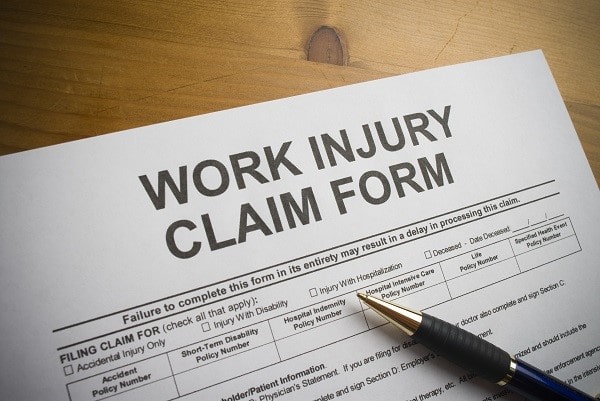An accident is defined as “an unfortunate incident that happens unexpectedly and unintentionally, typically resulting in damage or injury.” In other words, even if a small business has done their due diligence by implementing a robust
loss control program, providing ample safety training and maintaining the safest work environment possible, sometimes unavoidable accidents that result in workplace injuries can still occur.
According to OSHA, in 2017 private industry employers reported around
2.8 million nonfatal workplace injuries and illnesses. And, a
recent report from the National Academy of Social Insurance (NASI) states that in 2016, workers’ compensation total benefits paid out reached $61.9 billion.
How to File a Workers’ Comp Claim Correctly

Workers’ compensation benefits both the injured worker and the small business owner, providing coverage for the injured employee’s medical costs and lost time from the workplace. It helps safeguard employers from lawsuits filed by the injured employee, as the employee receives the benefits regardless of who was at fault for the accident.
When an employee suffers an injury on the job, certain procedures must be followed and responsibilities need to be properly fulfilled in order to ensure a smooth process for both parties. While each state has its own system and laws, all states require filings from both the employee and the employer. Once those filings have been submitted, the insurance carrier files with the state.
Here are a few of the common mistakes employers should avoid when it comes to filing a workers’ comp claim:
Workers’ Comp Claim Mistake #1: Neglecting to Put the Injured Employee First
First and foremost, the employer needs to take care of their employee. While filing the paperwork and getting the claim process started is important, it’s also vital to express empathy and concern in this type of situation. Reach out to the injured worker immediately and stay in touch throughout the recovery process. Remember: employees are an organization’s most valuable asset, and employers need to treat them as such.

Workers’ Comp Claim Mistake #2: Not Getting a Full Report of the Accident or Injury
While it’s estimated that only
one to two percent of all workers’ compensation claims are fraudulent, employers should still make sure to gather all the facts surrounding the incident. Talk to the employees who witnessed the event about what went wrong and document their accounts. If possible, review video footage and preserve it as evidence. Not only will this help employers understand exactly what happened, but they can also learn what safety procedures may be in need of improvement to prevent future injuries for other employees.
Workers’ Comp Claim Mistake #3: Procrastinating the Filing Process
Claims forms should be provided to injured employees typically within 24 hours of the employee giving notice of the incident. The employer is responsible for timely reporting, meaning all the required information, which often includes personal data like the employee’s social security number, date of hire, payroll history and more needs to be supplied to the workers’ compensation carrier within the state’s set requirement period.
Workers’ Comp Claim Mistake #4: Ignoring State Specific Submission Requirements
As mentioned previously, each state has specific requirements and regulations when it comes to filing a workers’ compensation claim, and employers should understand exactly what is needed before starting the claims process. Visit the U.S. Department of Labor’s
State Workers’ Compensation Officials website to find the names and addresses of the appropriate state workers’ compensation official.
Workers’ Comp Claim Mistake #5: Not Implementing a Return to Work Program
A
return to work (RTW) or modified duty program helps alleviate the stress on both the employer and the injured employee. These programs offer injured employees a way to ease back into the workplace even if they cannot perform their pre-injury job duties. It also provides them with financial security, keeps them socially connected and helps their skillset remain sharp. For employers, a RTW program helps minimize their workers’ compensation costs, reduce turnover and maintain productivity in the workplace.
Workers’ Compensation Insurance from AmTrust Financial
AmTrust Financial is a leader in
workers’ compensation, working with small and mid-sized businesses to design the specific packages they need to comply and succeed. For more information about our
small business insurance solutions, please
contact us today.
 This material is for informational purposes only and is not legal or business advice. Neither AmTrust Financial Services, Inc. nor any of its subsidiaries or affiliates represents or warrants that the information contained herein is appropriate or suitable for any specific business or legal purpose. Readers seeking resolution of specific questions should consult their business and/or legal advisors. Coverages may vary by location. Contact your local RSM for more information.
This material is for informational purposes only and is not legal or business advice. Neither AmTrust Financial Services, Inc. nor any of its subsidiaries or affiliates represents or warrants that the information contained herein is appropriate or suitable for any specific business or legal purpose. Readers seeking resolution of specific questions should consult their business and/or legal advisors. Coverages may vary by location. Contact your local RSM for more information.